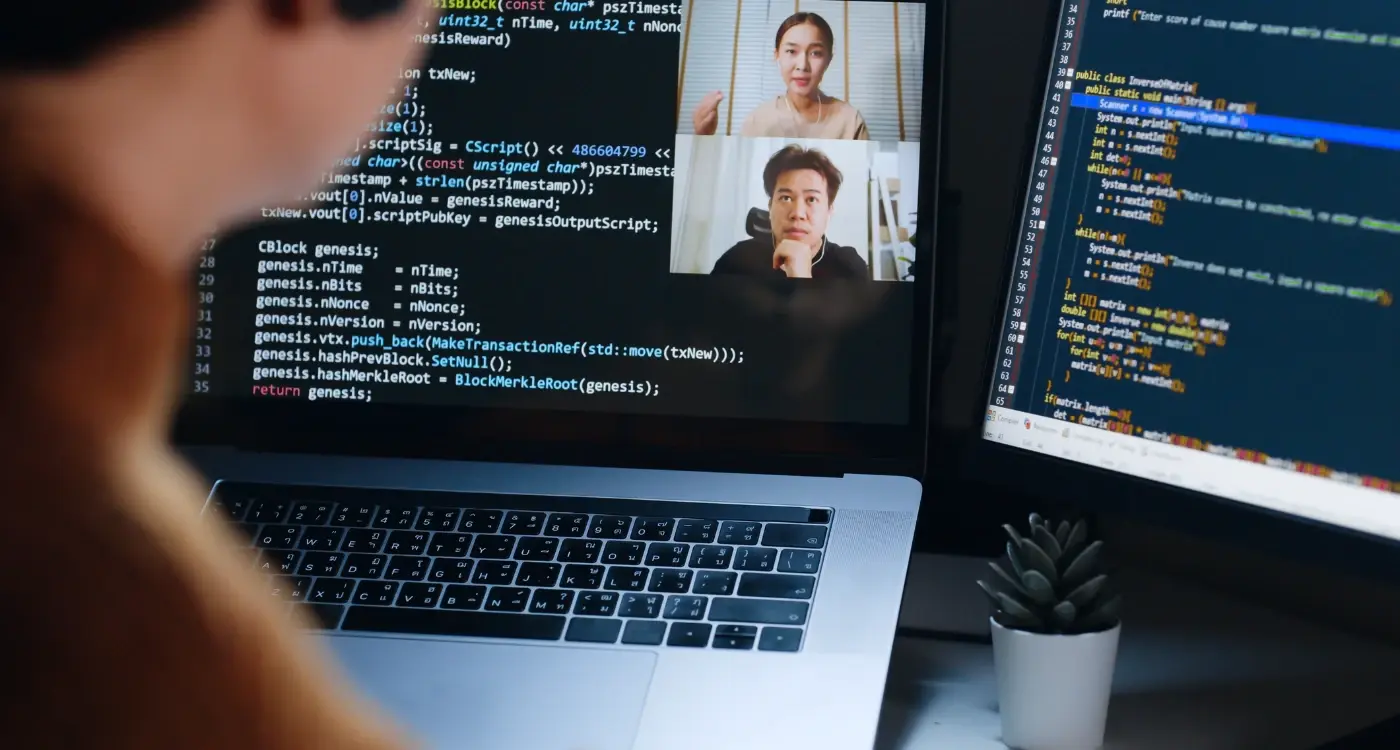How Do I Coordinate App Updates When I Have A Development Team?
Managing app updates across a development team can turn into absolute chaos faster than you'd think. One developer pushes changes that break another's work, someone accidentally overwrites code that took hours to write, and before you know it your mobile app release is delayed by weeks. Sound familiar? You're not alone—this happens to teams every single day, and it's exactly why coordinating app updates properly is make-or-break for any development project.
When you're working solo, updating your app is straightforward. You write code, test it, and release it. But add multiple developers into the mix and suddenly you need systems, processes, and clear communication to keep everyone working together without stepping on each other's toes. Version control becomes your lifeline; collaborative development transforms from a nice-to-have into an absolute necessity.
The biggest mistake teams make is thinking they can coordinate app updates through email and shared folders—it never works and always ends in tears
This guide will walk you through everything you need to know about coordinating app updates when you have a development team. We'll cover the technical bits like version control systems and branching strategies, but also the human elements like communication and conflict resolution. By the end, you'll have a clear roadmap for keeping your team productive and your app releases smooth.
Understanding Version Control Systems
After years of working with development teams, I can tell you that version control systems are probably one of the most misunderstood tools in app development—yet they're absolutely fundamental to keeping your team organised. Think of version control as your app's filing system; it tracks every change your developers make to the code, stores different versions of your app, and lets multiple people work on the same project without stepping on each other's toes.
What Version Control Actually Does
When your team writes code, version control systems like Git keep a detailed record of who changed what and when they changed it. This means if someone accidentally breaks something (and trust me, it happens to even the best developers), you can roll back to a working version without losing weeks of work. It's like having an unlimited undo button for your entire project.
Why Your Team Needs This
Without version control, coordinating app updates becomes a nightmare—developers end up overwriting each other's work or worse, losing code completely. I've seen teams try to manage updates by emailing files back and forth or using shared folders, and it always ends badly. Version control systems solve this by creating a central repository where everyone can contribute safely, merge their changes together, and keep track of what's happening across the entire development process.
Setting Up Your Development Workflow
Getting your development workflow sorted is probably one of the most overlooked parts of mobile app development—and I see teams stumble here all the time. You might think jumping straight into coding is the way to go, but trust me, spending time upfront on workflow will save you headaches later.
Your workflow needs to handle three main things: how code gets written, how it gets reviewed, and how it moves from your developer's computer to your users' phones. Start by choosing your version control system (Git is the industry standard) and set up a central repository where all your code lives.
Basic Workflow Structure
A solid workflow follows a predictable pattern that your entire team can follow without thinking. Each developer should work on their own branch, make changes, then request those changes get merged back into the main codebase after review.
- Create feature branches for new work
- Write and test code locally
- Submit pull requests for review
- Merge approved changes to main branch
- Deploy tested code to app stores
Tools You'll Need
Don't overcomplicate this—you need a repository hosting service like GitHub or GitLab, a project management tool to track tasks, and automated testing that runs when code changes. The key is consistency; everyone should follow the same process every single time.
Set up branch protection rules so nobody can accidentally push untested code to your main branch—this simple step prevents most deployment disasters.
Managing Code Branches and Merges
I'll be honest with you—managing code branches sounds scarier than it actually is. Think of branches as different versions of your app that your team can work on at the same time without stepping on each other's toes. When Sarah works on the login screen and Tom fixes bugs in the payment system, they're both working on separate branches so their changes don't clash.
The magic happens when you merge these branches back together. This is where all the separate pieces of work get combined into one complete app. But here's the thing—merges can go wrong if you're not careful. Code conflicts happen when two developers change the same piece of code in different ways.
Common Branching Strategies
Most development teams use one of these approaches:
- Feature branches—each new feature gets its own branch
- Release branches—separate branches for different app versions
- Hotfix branches—quick fixes for urgent bugs
- Development branches—main working branch before production
Best Practices for Smooth Merges
Keep your branches small and focused; big branches are harder to merge and more likely to cause conflicts. Merge frequently rather than letting branches grow stale—trust me, a week-old branch is much easier to merge than a month-old one. Always test your code before merging and get someone else to review your changes. Two pairs of eyes catch more problems than one.
Coordinating Team Communication
Getting your development team talking properly is probably one of the hardest parts of mobile app development—and I've learnt this the hard way over the years. You can have the best version control system in the world, but if your team isn't communicating well, your app updates will still turn into a right mess.
The key is setting up regular check-ins that actually work. Daily stand-ups are brilliant for this; everyone shares what they're working on, what they've finished, and what's blocking them. Keep these meetings short—no more than 15 minutes—or people will start switching off. I also recommend using collaborative development tools like Slack or Microsoft Teams alongside your version control system, so developers can quickly share code snippets and discuss changes without endless email chains.
Clear Documentation Makes Everything Easier
Your team needs to document everything they're doing, especially when working on different features simultaneously. This means writing clear commit messages, updating project boards, and keeping track of which version control branches are being used for what.
Communication isn't just about talking—it's about making sure everyone understands what's happening and when it's happening
Don't forget to establish who makes the final decisions on merges and releases. Having one person responsible for approving major changes prevents conflicts and keeps your mobile app development on track.
Testing and Quality Assurance Processes
Testing your app updates isn't just about making sure nothing breaks—it's about protecting your reputation and keeping users happy. I've seen too many teams skip proper testing because they're rushing to get updates out, only to face angry reviews and support tickets flooding in. Trust me, spending time on testing now saves you hours of firefighting later.
Setting Up Your Testing Pipeline
Your testing process should happen in stages. Start with unit tests that check individual pieces of code work correctly. Then move to integration tests that make sure different parts of your app talk to each other properly. Finally, run user acceptance tests where real people try out your app updates. Each stage catches different types of problems—you need all three to catch everything.
Making Testing Work With Your Team
The best testing happens when everyone takes responsibility for quality, not just your QA team. Developers should test their own code before passing it on; designers should check their interfaces work on different devices; project managers should verify features match requirements. Set up automated tests that run every time someone commits code—this catches problems immediately rather than letting them pile up.
Don't forget to test on real devices, not just simulators. Different phones behave differently, and what works perfectly on your development machine might crash on older devices your users actually own.
Deployment and Release Management
Right, let's talk about the bit that makes most development teams sweat—getting your mobile app out there. After years of managing releases, I can tell you that deployment is where good version control practices either save your bacon or leave you scrambling at 2am trying to fix something that's already live.
The key to smooth deployment is automation. Manual deployments are like playing Russian roulette with your app store ratings. Set up automated build pipelines that pull from your main branch, run tests, and package everything ready for release. This removes human error from the equation and means any team member can trigger a deployment without needing to remember seventeen different steps.
Release Branches and Staging
Create a release branch from your main development branch about a week before you want to go live. This gives you a stable snapshot to work from whilst your team continues adding features to the main branch. Test everything on this release branch—and I mean everything. Push it to a staging environment that mirrors your production setup exactly.
Always keep a rollback plan ready. App stores can take hours to approve updates, so if something goes wrong, you need to be able to revert quickly using your version control system.
Coordinating Team Releases
Communication becomes critical during releases. Set up a release schedule that everyone knows about:
- Code freeze dates when no new features go in
- Testing phases with clear responsibilities
- Deployment windows when the whole team is available
- Post-release monitoring periods
Track your releases using tags in your version control system. This makes it dead simple to see exactly what code went into each version and helps massively when you need to debug issues or cherry-pick fixes between versions.
Handling Conflicts and Problem Resolution
Even the most organised development teams run into problems—it's just part of the process. I've seen teams panic when two developers accidentally work on the same feature, or when a last-minute bug appears right before launch. The key is having a system in place to handle these situations calmly and efficiently.
Common Conflict Types
Most conflicts fall into predictable categories. Code conflicts happen when multiple developers modify the same files; timeline conflicts occur when features take longer than expected; scope conflicts arise when requirements change mid-development. Understanding these patterns helps you respond quickly rather than scrambling for solutions.
- Set up automated conflict detection in your version control system
- Create a clear escalation process for unresolved issues
- Document all decisions and their reasoning
- Hold regular team check-ins to catch problems early
Resolution Strategies
When conflicts do arise, address them immediately—waiting only makes things worse. Bring the relevant team members together, review the facts without assigning blame, and focus on finding the best solution for the project. Sometimes this means compromising on features; other times it means adjusting timelines. The goal is keeping your app development moving forward whilst maintaining quality standards.
Remember that conflicts aren't failures—they're learning opportunities that help your team improve their coordination skills for future projects.
Conclusion
After eight years of helping teams coordinate mobile app updates, I can tell you that the difference between chaos and smooth sailing often comes down to having the right systems in place. Version control isn't just about storing code—it's about creating a foundation where your development team can work together without stepping on each other's toes.
The beauty of collaborative development lies in how all these pieces fit together. Your version control system keeps track of every change; your workflow ensures everyone knows what they're doing; your communication channels prevent misunderstandings before they happen. When you get this right, app updates become predictable rather than stressful.
I've seen teams transform from dreading release days to confidently pushing updates knowing their processes will catch problems early. The key is starting simple and building up your coordination systems over time. Don't try to implement everything at once—pick one area that's causing the most headaches and focus on that first.
Your mobile app's success depends on your team's ability to work together effectively. With proper coordination, version control, and communication, you'll find that managing app updates becomes second nature. The investment in setting up these systems pays dividends every single time your team ships an update.
Share this
Subscribe To Our Learning Centre
You May Also Like
These Related Guides

How Do You Set Up Effective Development Team Communication?

How Do Remote Teams Handle Code Reviews Effectively?



